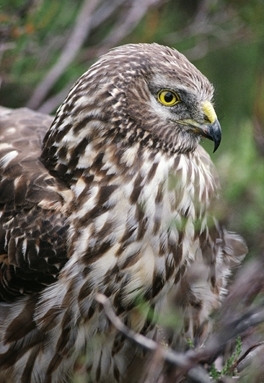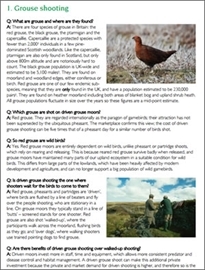 The GWCT says the results of the national hen harrier survey indicate that balance in moorland conservation and management in the UK is needed more than ever.
The GWCT says the results of the national hen harrier survey indicate that balance in moorland conservation and management in the UK is needed more than ever.
Many birds of prey have now largely recovered their numbers, with buzzards, sparrowhawks and ravens commonplace species. Such a full recovery of numbers and range is not the case for all birds of prey. Though the hen harrier has increased in range and number from a few pairs on Scottish islands in the early 20th century to the estimated 545 pairs in 2016, there is still work to do on their conservation.
This ground-nesting species is attracted to grouse moors where gamekeepers manage the heather, the fox numbers, and provide plenty of young grouse for them to eat. The GWCT’s research has shown a cyclical relationship between harriers and keeping. With plenty food and protection from foxes, harrier numbers can increase1. If predators eat too many grouse chicks, the grouse moor becomes unproductive, making the moor redundant. Without gamekeepers there is less food, heather or fox control, so the harrier population cycles down again. Declines and rises in harrier numbers are not always linked to grouse management.
The GWCT believes the UK’s objective must be to enhance the community of raptors in the country as a whole. In some species this will need improvements in food supply or nest protection2. In other places reducing the predation pressure by raptors, including hen harriers, on wildlife using the most satisfactorily humane methods will encourage their protection and conservation3.
Dr Adam Smith said: “We need an adaptive approach whereby agreements are reached between landowners and government, allowing sustainable numbers of both raptors and prey to be achieved. We welcome Defra’s plan to study how to regulate the impacts of harriers on grouse in a non-lethal trial in the interests of both species. This is overseen by Natural England and supported by many organisations including the Game & Wildlife Conservation Trust, who first suggested licensed control in 1998. Grants, intra-guild effects, limited culls, target predator densities and other mechanisms should be used in this way to serve the long-term interest of raptors as well as game species and other wildlife.
“The GWCT condemns crimes against wildlife. We are committed to finding an effective and practical resolution to the conflict between red grouse and raptors. Wildlife crime only serves to delay a satisfactory resolution of the conflict.”
References
1. Tapper, S and Hughes, J (2005) Hen Harriers and the Joint Raptor Study. The Game Conservancy Trust and RSPB.
2. Whitfield, D.P et al. (2008). A Conservation Framework for Golden Eagles: Implications for their Conservation & Management in Scotland. Scottish Natural Heritage Commissioned Report No. 193. SNH, Battleby.
3. Redpath, S et al. (2010) People and Nature in Conflict can we reconcile hen harrier conservation and game management? In - Species Management: Challenges and Solutions for the 21st Century. Baxter and Galbraith (eds). Scottish Natural Heritage, Edinburgh
Get your FREE guide to grouse shooting and moorland management

What's inside your FREE guide
✓ Grouse shooting
✓ Conservation on grouse moors
✓ Heather burning
✓ Moorland drainage
✓ Disease control
✓ Upland predator control
✓ Hen harriers and red grouse
✓ Mountain hares and red grouse
✓ Alternative moorland use
✓ Commonly heard criticisms of driven grouse shooting
Get your FREE guide >